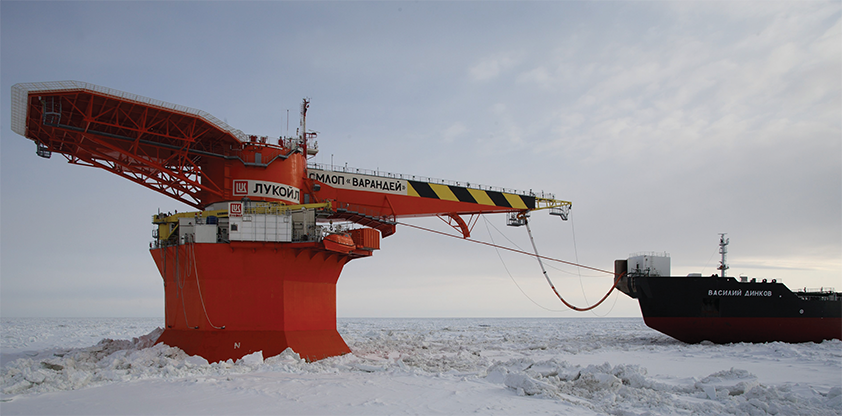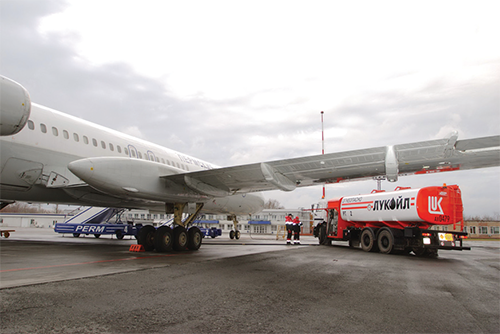
LUKOIL: Leading Global Oil and Gas Expansion with Major Projects and Innovations
The new frontier
Lukoil is one of the world’s leading vertically integrated oil and gas companies with activities that stretch ‘from the oil well to the gas outlet’.
The business was initially established in 1991 as a state-owned oil concern and today has grown to become the second largest private oil company in the world by proven hydrocarbon reserves. Although in this time the company has undergone numerous developments, its continued expansion into the European market has been particularly prominent.
Today Lukoil’s interests are split into three complementary areas – exploration and production (E&P) of oil and gas, production of petroleum products and petrochemicals, and marketing of these outputs. The majority of Lukoil’s E&P activity is located in Russia and the resource base of Western Siberia, although the company also carries out projects in Saudi Arabia, Colombia, Venezuela, Iraq, Egypt, Kazakhstan and Ghana, amongst others. These are supported by Lukoil’s modern refineries, gas processing and petrochemical plants in Russia and Eastern and Western Europe, with these products being marketed in excess of 26 countries across the globe.
Given its scope of activities, Lukoil dominates the Russian energy sector with 18.6 per cent of total Russian oil production and 18.9 per cent of total Russian oil refining to its name. This prominent market position means that Lukoil is one driving force within the sector, identifying niche opportunities and methods to improve its current operations. One such example is a unique project for the construction of an offloading terminal in the Varandey settlement on the coast of the Barents Sea to facilitate the year round transportation of oil produced in the Timano-Pechora oil and gas province.
Vladimir Semakov, media and press relations manager, elaborates upon the key challenges of such a project: “The cold climate of the region means that on average the Barents Sea is covered with ice 247 days a year of a thickness of up to1.8 metres. In addition the shallow coastal area prevents the construction of an onshore shipping terminal. Therefore in order to accommodate large capacity tankers with a deadweight of up to 70,000 tonnes, we constructed a fixed offshore ice-resistant offloading terminal (FOIROT) 21 km offshore.”
 More than 50 metres high and weighing 11,000 tonnes, the FOIROT was designed with two different features – a jacket incorporating the operating systems and accommodation module for 12 people, and a rotating and mooring hoist (RMH) with a jib and helipad. The jacket is mounted on the ocean floor with the help of 24 piles, and has a specially designed octagonal shape to endure maximum ice loads. FOIROT operations are also supported by an auxiliary icebreaker vessel and icebreaker tugboat. These vessels ensure the safety of the terminal and assist the tankers in manoeuvring and performing mooring and cargo operations in icy conditions.
More than 50 metres high and weighing 11,000 tonnes, the FOIROT was designed with two different features – a jacket incorporating the operating systems and accommodation module for 12 people, and a rotating and mooring hoist (RMH) with a jib and helipad. The jacket is mounted on the ocean floor with the help of 24 piles, and has a specially designed octagonal shape to endure maximum ice loads. FOIROT operations are also supported by an auxiliary icebreaker vessel and icebreaker tugboat. These vessels ensure the safety of the terminal and assist the tankers in manoeuvring and performing mooring and cargo operations in icy conditions.
The onshore infrastructure supporting the FOIROT consists of a tank farm with a 325,000 cubic metre capacity, a pumping station, energy supply facilities, and other amenities. This is connected to the FOIROT via two subsea pipelines encased in concrete with a diameter of 820 mm. The crude oil is then loaded into the tankers from the RMH with the help of a flexible pipe. Since the crude oil arrives at the terminal in a heated state, in between loading periods it is circulated onshore-offshore to maintain the required pipeline temperature. This prevents oil congealing during the planned pipeline downtime for cleaning and preventive maintenance.
“The FOIROT was constructed on the permafrost, and therefore the bases of the 50,000 cubic metre tanks are equipped with forced soil freezing systems,” notes Vladimir. “All tanks are double-walled according to the ‘vessel in vessel’ principle to prevent any leaks or oil spills. The pumping station at the Varandey terminal has a productivity of 8000 cubic metres per hour, making it possible to load a 70,000 tonne tanker in just ten to 12 hours, which increases the integrity of transhipment operations in the changeable climate on the Barents Sea.”
Other major projects taking place within Lukoil’s global interests include a programme of extensive exploration and appraisal drilling within two areas of the Gulf of Guinea, West Africa, as part of a partnership venture. Earlier in 2010 Lukoil also signed a development and production agreement at the Iraqi West Qurna-2 field, following its successful bid in partnership in Statoil Norway in December 2009. This agreement will last a minimum 20 years, with the possibility of a five-year extension. Drilling operations are due to start this year with production planned for 2012, and Lukoil hopes to reach its targeted production level of 90 million tonnes of oil per year by 2017.
Activities such as these all contribute towards Lukoil’s long-term plans to become one of seven international private energy majors. Although this vision may seem ambitious, when considering the company’s history and current global standing it certainly seems feasible, particularly given Lukoil’s strong ties to the Russian market, which is of growing global interest. “This year Lukoil is celebrating its 20th anniversary, and whilst 20 years is just one period in the global history of oil, it is equal to the history of the Russian Federation so we are well integrated into that market. The Russian Arctic is predicated to be the future major global oil and gas province, as indicated by the latest alliance between BP and Rosneft, a Russian state controlled oil and gas company. With this in mind, we are interested in expanding our reach in this region, preferably in partnership with Russian or international, state controlled or private companies,” concludes Vladimir.
Lukoil
Services: Exploration, production and processing